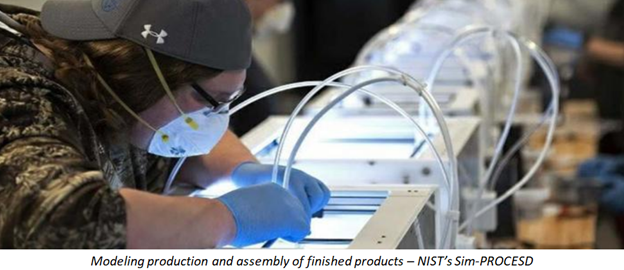
Earlier in 2022, NIST researchers released a simulation package that models the behavior of "discrete manufacturing systems," which include the production and assembly of finished products, like vehicles, consumer electronics, and consumer goods. The package is called "Simulated-Production Resource for Operations and Conditions Evaluation to Support Decision-Making," or Sim-PROCESD, and the software is publicly available.
The simulation focuses on asynchronous production lines, which move jobs to workstations when they are available, rather than moving jobs simultaneous in a line. The simulation also can model the degradation and maintenance of machines involved.
Users can configure the simulation to model various real-world manufacturing systems. Sim-PROCESD also allows users to change the behaviors of existing systems to model more complex processes. Additionally, Sim-PROCESD aids simulation-based optimization and planning applications – such as for evaluating alternative maintenance policies for a particular system. And users can model expected system performances under various policies, with Sim-PROCESD supporting simulation replication.
There is interest in Sim-PROCESD from various stakeholders, including university and government organizations. NIST researchers are presenting on the use of Sim-PROCESD in the course, "Modeling and Control of Manufacturing Processes," conducted by the University of Virginia's Department of Mechanical and Aerospace Engineering. NIST researchers also are in discussion with other government agencies in exploring ways this software can streamline planning for new facilities and operations.

